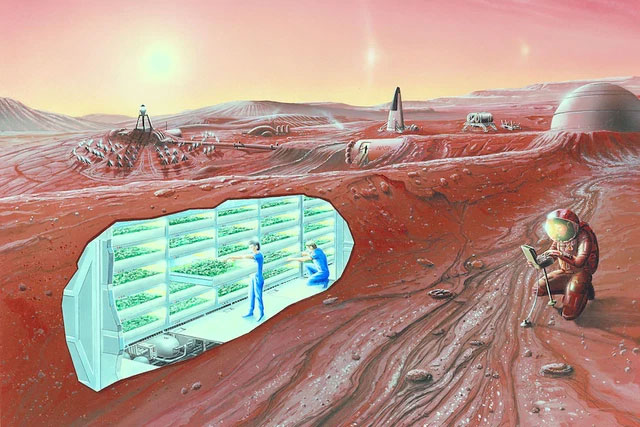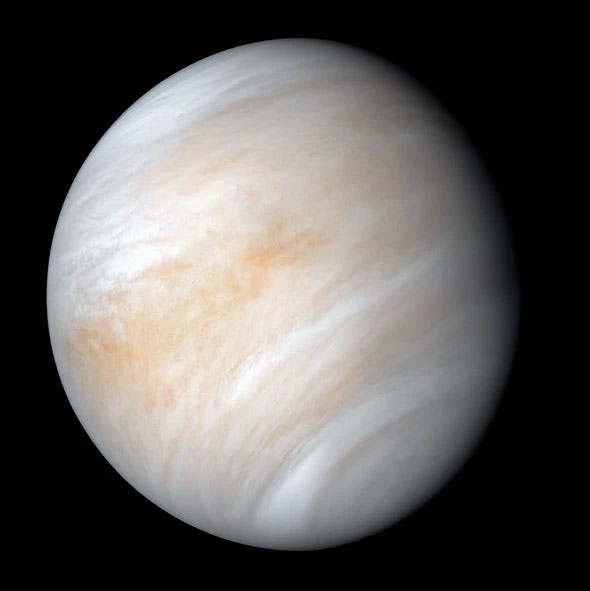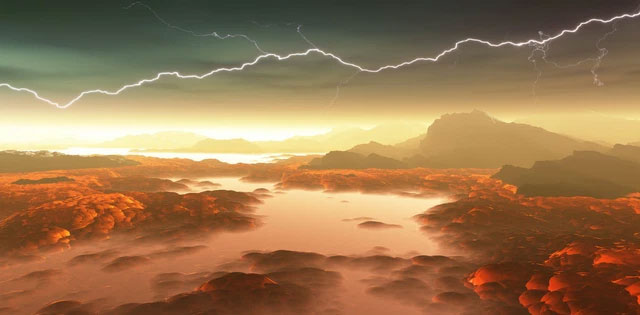For a long time, we have yearned to settle on Mars, so much so that science has invested in researching ways to survive on the Red Planet, sending robots to explore its most basic characteristics.
As of now, we can speculate that Mars once had a biosphere similar to Earth, with large bodies of water flowing across its surface, which is now barren. Based on what we know about life, the presence of water on Mars indicates that the Red Planet was once able to sustain living organisms. Recent discoveries have detected traces of ice in the soil, which is one of many reasons suggesting that microorganisms, or life, may exist on Mars.
However, Mars remains a desert unsuitable for life. The high temperatures and dense atmosphere radiating solar energy make settling there extremely challenging. The most reasonable way to live on the Red Planet is to stay away from the surface and build sturdy underground shelters.

Underground settlements could help us colonize Mars.
Yet, Mars is not the only candidate for humanity’s second home; in fact, it doesn’t even make the list of planets that could support life.
Still, Mars is the only planet located in the habitable zone around a star (in this case, the Sun). The other two planets in this zone are Mercury and Venus, both of which pose potential lethal risks.
Yet Venus Could Be a Strong Contender
When talking about Venus, we refer to the hottest planet in the Solar System, with surface temperatures reaching up to 463.85 degrees Celsius. The atmospheric pressure is so immense that it can crush a soda can, and the planet’s surface constantly experiences volcanic activity, compounded by regular sulfuric acid rain. Yet, Venus could still sustain life.
The key issue is this: the difficulties in settling on Venus lie at the planet’s surface, while its atmosphere remains friendly to life. In other words, humans could survive in Venus’s atmosphere.

Venus.
First, a protective suit would not be a strict requirement, as astronauts would only need an oxygen tank and a breathing mask. At an altitude of about 50 km above Venus’s surface, the planet’s harsh atmosphere resembles the living environment on Earth. Temperatures at this height range from 0 to 50 degrees Celsius.
Furthermore, Venus’s atmosphere could serve as a shield against extraterrestrial objects; these objects would burn up before reaching the surface, something that is less likely to occur on Mars.
Gravity would also not impact the quality of life for settlers. Mars’s gravity is only 38% that of Earth, which would certainly hinder the growth of children and the physical development of adults. In contrast, Venus’s gravity is 90.4% that of Earth.
Higher gravity means that space travel to the planet would be easier. Additionally, Venus is closer to Earth, with a travel time between the two planets of just 97 days, which is significantly shorter than the 7-month journey from Earth to Mars.
From Fiction to Reality
So how do we establish settlements on Venus? Scientist Geoffrey A. Landis from NASA proposes… in the sky: we could build floating settlements in the atmosphere, held aloft by giant balloons made from materials lighter than air.

Illustration of Venus’s harsh surface.
According to Mr. Landis, it is not too difficult to construct and maintain a floating city. “Because Venus’s atmosphere contains a lot of CO2, the gas we have been coexisting with, nitrogen and oxygen could be used to lift objects.”
He continued: “On Earth, we know that to make something fly, we need it to be lighter than air. You know what? Our air is lighter than the air [of Venus].”
“If you could take your room, replace the walls with something thinner, the room would float in Venus’s atmosphere,” aerospace engineer Landis asserts.

Instead of using magic, cloud cities could be built with technology.
This image appears frequently in science fiction works, and if it were to become reality, it would most likely happen in the atmosphere of Venus. There are individuals ambitious enough to explore the research and construction of such a city. Elon Musk may dream of a prosperous city on the barren surface of the Red Planet, while others may aspire to a “city in the clouds”, floating above a planet that frequently experiences acid rain.
With its proximity to the Sun, the amount of solar energy that Venus receives would be extraordinarily abundant. Preliminary calculations suggest that solar panel efficiency would be over 40% higher than on Earth, and 240 times more effective than a similar device on Mars.
A flying city powered by solar energy and nuclear energy (at least until we achieve fusion energy) would be a new wonder of humanity.

















































